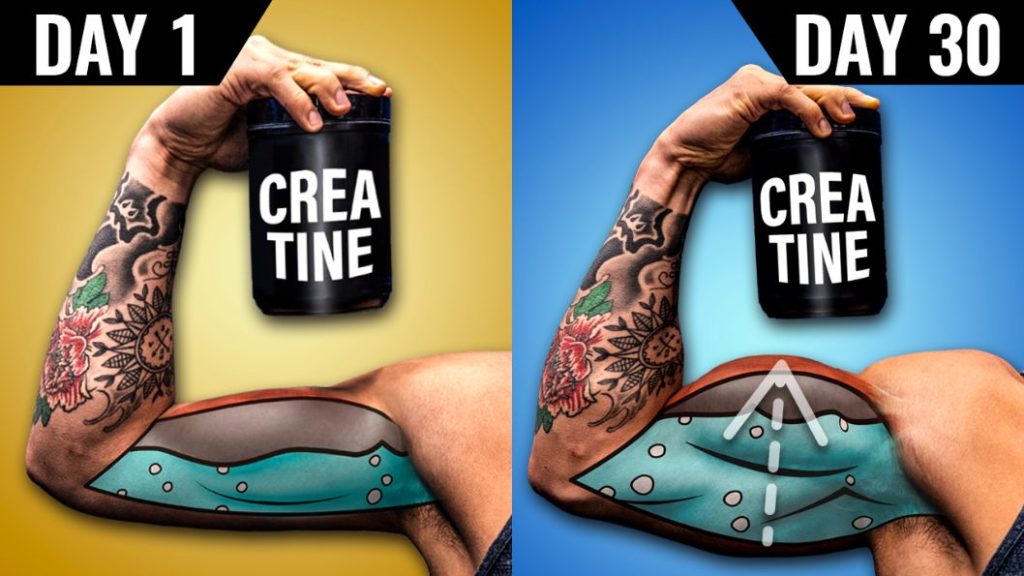Creatine Before And After 30 Days

Creatine, a popular supplement, shows noticeable physical and performance changes in users after just 30 days. This article breaks down the documented effects reported by individuals who incorporated creatine monohydrate into their daily routines.
Creatine: The First Month
Creatine monohydrate is known for its role in boosting muscle strength and size. Initial users report increased water retention, affecting body weight and muscle appearance.
Body Composition can change quickly. Studies indicate an increase in total body water within the first week.
Immediate Effects: Days 1-7
The primary observation is a rapid increase in body weight, largely due to water retention. This water weight often translates to a "fuller" muscle appearance, which many users find motivating.
Some individuals experience gastrointestinal discomfort during this phase. This can include bloating or stomach cramps, especially if creatine is taken on an empty stomach or without adequate hydration.
Dosage plays a key role. The typical loading phase involves 20 grams per day, split into four doses, for 5-7 days. Maintenance doses are then reduced to 3-5 grams daily.
Performance Enhancements: Weeks 2-4
After the initial water weight gain, users often report improvements in strength and power output. This is attributed to creatine's ability to increase ATP (adenosine triphosphate) availability.
ATP is the primary energy source for muscle contractions. Creatine supplementation helps replenish ATP stores more quickly, allowing for more repetitions and heavier lifts.
A study published in the Journal of Strength and Conditioning Research showed a significant increase in bench press strength after four weeks of creatine supplementation coupled with resistance training.
Muscle Growth: The Longer View
While creatine itself doesn't directly build muscle tissue, it creates an environment conducive to muscle growth. Increased strength allows for more intense workouts, leading to hypertrophy.
Protein synthesis is essential for muscle repair and growth. Creatine's impact on workout intensity indirectly supports this process.
Combine creatine with a high-protein diet and consistent resistance training for optimal results. This synergy can yield substantial gains in muscle mass over several months.
Reported Side Effects and Considerations
While generally safe, creatine supplementation can cause side effects in some individuals. The most commonly reported is gastrointestinal distress, as mentioned earlier.
Dehydration can be another concern. Ensuring adequate water intake is crucial to mitigate this risk.
Some outdated concerns about kidney damage have been largely debunked. However, individuals with pre-existing kidney conditions should consult a healthcare professional before starting creatine.
Who Benefits Most?
Athletes involved in high-intensity, short-duration activities benefit most from creatine. This includes weightlifters, sprinters, and power athletes.
Vegetarians and vegans may also experience greater benefits. Their baseline creatine levels tend to be lower, making them more responsive to supplementation.
Research suggests that even older adults can benefit from creatine. It helps maintain muscle mass and strength, combating age-related muscle loss (sarcopenia).
Scientific Evidence and Dosage
Numerous studies support the efficacy of creatine monohydrate. It is one of the most well-researched and widely used supplements in the sports nutrition industry.
The International Society of Sports Nutrition (ISSN) has published position stands on creatine. They support its use for enhancing athletic performance and muscle growth, when used appropriately.
Dosage recommendations generally follow the loading phase followed by a maintenance phase, as described earlier. Individual needs may vary based on body weight and activity level.
Real-World Results: What to Expect
Expect increased strength and power output within the first month. Noticeable muscle fullness and a slight increase in body weight are also common.
Individual results may vary based on genetics, training intensity, and diet. Consistency is key for maximizing the benefits of creatine supplementation.
Monitor your progress and adjust your training and nutrition accordingly. Consulting with a qualified coach or nutritionist can help optimize your results.
Controversies and Misconceptions
Many misconceptions surrounding creatine still persist. It does not cause hair loss, nor does it lead to excessive muscle cramping if properly hydrated.
Myths surrounding creatine need to be addressed with scientific evidence. Rely on credible sources and peer-reviewed studies.
Creatine is not an anabolic steroid. It is a naturally occurring compound that is found in small amounts in food.
Looking Ahead: Continued Research
Ongoing research explores the potential benefits of creatine beyond athletic performance. This includes cognitive function and neurological health.
The future of Creatine research is promising. Stay informed about the latest findings from reputable sources.
The effects of creatine are being investigated in many different populations, offering further hope.


















